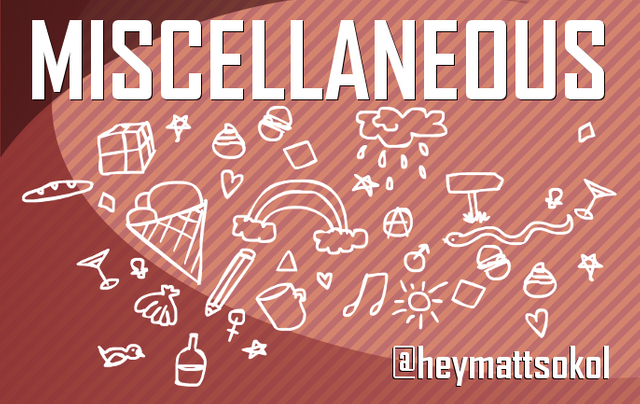Matt Taibbi (Rolling Stone) Identifies Two Obstacles to Digital Long Form Journalism - Does Steem Solve One?

On the Joe Rogan Experience podcast last week, Matt Taibbi spoke at length about the impact that the internet has had on journalism. They discussed the recent history (~30 years) of news distribution and consumption habits particularly in North America. I suspect it is similar in other areas.
The main narrative that Matt laid out is this: The internet taught us to expect free content. We saw the impacts of this earliest via the music industry, which fell to Napster and BitTorrent, but journalism reacted more slowly.
At this point he sees two major problems:
(1) Clickbait Journalism / Short Articles and Attention Spans
(2) Lack of Revenue to Fund Good Journalism
There’s both a lack of demand for longform journalism and a lack of money to fund it.
Is Lack of Demand The Main Thing?
It seems like any product with lack of demand is going to struggle to find money. That is what markets are for, right?
Taking even an extremely pure free market viewpoint, it is not always so simple.
Patronage is a model that has existed since the beginnings of civilization. When there is a craft that is worth being supported for reasons other than mass market acceptance, a wealthy patron can step in to make it possible. This leads to stuff like the works of Mozart, which would not have been feasible to “bootstrap,” amongst many many other historical artworks and developments.
Longform journalism definitely feels like the kind of product that has immense value, even if no one person is likely to have the time or money to fund it.
So the real problem is - our current financial model requires us to make a substantial contribution or else make no contribution at all.
You generally pay more than $2 at a time online, and it’s usually in a monthly subscription. There are pockets of the web, mostly live streaming video gamers, where donations are common… but outside of twitch.tv, it is rare to find donations on mainstream platforms..
I donate $2 per month to Sam Harris and his organization, for some of my favorite podcasts and books in the world. That feels fair, but looking at it economically, you can see how these kinds of payments do not add up to a full wage let alone a full revenue for a small business.
Lack of Contribution is a Technology Problem
Steem Enables Micro Patronage
I’ve never heard the term ‘micro patronage’ before but it certainly feels like a concept that needs to be in the music culture.
Steem is micro patronage. If I enjoy your article, I can “donate” up to twenty cents worth of steem with my upvote. That’s 10% as much as I give to Sam Harris - a guy whom I’ve listened to hundreds of hours of podcasts from. Yet on Steem, I’ll donate that 10% to someone who I may have never heard of before.
Since I get 10 full power upvotes per day, that means every single day on Steem I am being a patron equivalent to my full monthly patronage outside of Steem.
Steem turns us all into micro patrons. It’s the protocol for patronage. And it works on all levels, since in a micro patronage enabled world, even stuff like the best comments on the article can earn a few donations from appreciative readers.
I’ve struggled to find the perfect way to define steem, but the protocol for patronage might be my new go-to. What do you think about this concept? Does it feel right, or, do you see some flaws in it?

The news industry got hit really hard by the invention of the ad-blockers. People just don't want to look at those eyesore banners, but more importantly, those ads are a major source of adware and viruses.
Because Steemit has no ads, those two major problems have been solved! I predict that a lot of journalists will sooner or later leave the major news organizations and form their own brands on platforms like Steemit.
Yeah the ads are out of control and it isn't getting any better. I find it near impossible to browse most blogs -- even after I subscribe to all the newsletters, if I do everything they want, the pop ups NEVER STOP. They aren't intelligent.
Those kinds of websites are designed for one thing: Maximizing signups to the email list. Everyone knows it, nobody knows how to avoid the problem tho. IDK. I hope to have a website one day that does not do any of the ads, much like how Steem handles it.
It’s one of the more revolutionary aspects of the Steem blockchain, most definitely.
I have long thought about this topic, also because I tend to be a longform reader, as well as a Guardian reader (you know that
millennial ragBritish online institution which recently became a 24/7/365 beggar because they prefer page views over a paywall).Yet, the cost of especially longform journalism is rather... ridiculous. Even platforms like the excellent longreads.com pay rather above the better rewarded content on Steem (it isn’t uncommon for articles to be bought for USD 2,000). Several years back I have also paid $500-$600 for cornerstone content articles for our blog network (quality bloggers were more expensive then).
We will have to wait and see until one of the larger media outlets, no matter whether new media or MSM starts a SMT and whether they can make it work for them. Many nowadays do occasionally attempt trials on new platforms and invest resources in those efforts. My only question about SMTs in that regard will be how will their respective legal and marketing departments feel about it. Especially if they pitch their own token as well.
Why hasn’t Medium, who don’t hide their financial woes, forked Steem yet? :D
We have already had a prolific author who has been published regularly by Rolling Stone, even cover stories, who has also published unedited cuts of his articles here on Steem. He has benefitted excellent rewards but I like to think that was the rewarding celebrity element, as well as his well-chosen topics which echoed rather well with Steemians (Elon Musk and Kurt Cobain). All in all it was stupid to see because already paid for content was rewarded to the hilt just because the author benefited geek cred, but that’s a no-kool aid reflection.
Joyoftech can’t make Steem work for them though. They suffer from not original content.
Addendum: Could it possible also be, and thus indeed be a psychological element, that you are willing to make the step to patron because you’ve accumulated upvoting prowess, rather than have financially invested in it. I, honestly, call BS on it being it a technology problem. For years we’ve seen many attempts at making micro-patronage work. From tipping, to flatter, to now the monthly subscription models powered by Patreon or Flattr’s latest incarnation, and even the BAT browser.
People just do not like taking out their credit card. It’s psychological.
Steem though makes the upvote, the reward mechanic not only flawless - easy as a like (technological) but also free for most (psychological).
You mentioned on Steem you are willing to do it to someone you don’t know, but when you actually fork out $2/month it’s for somebody who has already given you lots. That’s not a technological issue.
DUDE. Neil followed me on Twitter thanks to a Steem-related tweet I sent him, and he is to this day BY FAR my most credible social media follower. It kind of blows my mind that a guy whose books I have been reading for like a decade is now following me lol.
The same thing happened when The Needle Drop, a mega youtube music review guy, resteemed me here. He hasn't stuck around, but still, those kinds of moments make me realize how valuable my role as a "high profile" steemian is.
And on the topic of SMTs, I suspect New York Times is a high target. They have their eyes on the ball with this, as this story really shows:
Medium and Steem would be the perfect fit, but I somehow can't see the ultra-successful leaders of Medium accepting a second-fiddle role to Steem with their thing. I imagine they want Medium to save longform journalism, not to give in to Steem, even though the humble thing would be the opposite. Also, maybe Ned and his crew are just too sketchy (as seems mildly possible) for the Medium team to actually work with. Lots of unknown factors.
Regarding the psychology vs. technology -- I have to retain my original position - I think the fact that you use Patreon, Flattr, and BAT as examples goes to show how Steem is so ahead of the curve. The examples you give are generally accepted as good, but imo not actually good, as micro patronage platforms. Only Steem has made it really work so far.
Patreon is close for sure, but it can never achieve mainstream success in my opinion - both for your psychological credit card reason and other factors. IDK. I agree the credit card thing is real, but the true and ultimate obstacle IMO is the lack of a simple "tip $0.10" kind of button.
Like forget about the credit card. Imagine you could literally put a dime into a slot in your computer to tip the creator of the content you are enjoying. As ludicrous as it is, this would be the ultimate technology for patronage, right? It would be an improvement on the credit card technology by eliminating the fear / hassle of protecting and sharing the credit card data with the web app. We can't do it that way, but we have to find the realistic alternative, which is even better than putting a dime into your computer. At least that's the foundation of my view for the moment, though I can see that there's much more to be explored
'micro-payments'.
A concept that has been talked about since Ted Nelson
Micro payments are different from micro patronage. similar, but different. Patronage specifically implies it's a "tip" or a "donation" as opposed to a negotiated transaction of market value.
Micro payments = paying $0.10 for a song to be allowed to hear it
Micro patronage = voluntarily upvoting $0.10 on the song because its easy and you kinda feel like it